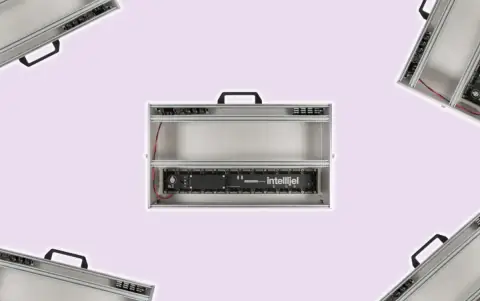
Curly hair makes seemingly simple tasks more challenging than they should be. There are countless guides and tips online for brushing curly hair without causing frizz, but they all overlook the most important detail: you shouldn't brush curly hair at all. To be more specific, curly hair and brushes do not mix. If your hair is wavy, you should avoid brushing it, too. The question then becomes, "What should you do?" How can you safely detangle your wavy or curly hair without causing any damage or frizzing it out?
Though there are methods for "brushing" curly or wavy hair, they do not involve the use of a traditional hairbrush. All brushes are far too harsh for curly and wavy hair, which is why they aren't used. Fine, closely spaced teeth (or bristles) in these brushes are a recipe for disaster when used on curly or wavy hair, resulting in breakage, damage, and frizz.
The Right Way to Brush Curly Hair
Brushing with a wide-tooth comb or detangling with your fingers are two safe ways for curlies and wavies to detangle and brush their hair without damaging it or making it frizzy and unmanageable. However, there are some guidelines to follow with both of these techniques to prevent hair damage. Read on to find out more about these techniques for detangling your hair and preventing frizz and damage to your waves and curls.
It's A Bad Idea to Brush Dry Hair
You should always detangle your hair in the shower, after giving it a good soaking and applying a generous amount of conditioner. Slip is created between the comb or fingers and the hair, and between the hair strands themselves, thanks to the conditioner. Since snagging and breakage when combing and detangling are major contributors to that familiar halo of frizz, this slip will help you avoid those frustrating experiences.
ALSO READ: How to Brush Curly Hair Without Causing Frizz
Untangle From The Bottom Up
No tool, not even your fingers or a brush, is up to the task of detangling a thick head of curly hair. As a result, you'll end up breaking and damaging your hair as you use force to detangle it. Instead, section off a small portion of the hair at a time and work your way up from the bottom to detangle. As a result, your hair will be under less stress and less likely to suffer any damage as a result of your regular combing or finger detangling routine.
Maintain Your Hair's Hydration
Hair that has been properly nourished and hydrated will not break or tangle easily when brushed or detangled. Hair that is in good condition is less likely to tangle, can withstand more stretching before breaking, and is easier to comb through. Avoid using products that could dry out your hair and make it brittle, and make sure you're getting enough water and healthy nutrients for your hair.
Think About Using A Detangling Spray
After putting down the brush, carefully detangling from the bottom up, and perfectly nourishing your hair, if you still have hair that is difficult to detangle, you may want to consider a detangling spray. If you incorporate detangling products designed for curly girls into your routine on a regular basis, you can reduce the amount of actual tangling your hair experiences in between washes. They work to prevent tangles by providing extra slip, and many detanglers can be used in tandem with other styling aids. In addition to reducing the time and effort required to detangle, this will also protect your hair from the potential damage, breakage, and frizz that comes with the process.
ALSO READ: Best Haircare Guide to Maintain Curly Hair





